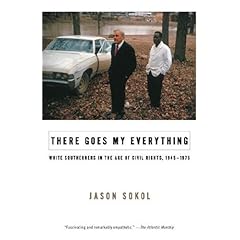The Long Road From Little Rock: 50 Years Later
Fifty years ago this month, America met the schoolhouse mob. Thousands of whites encircled Little Rock Central High School on September 4, 1957, as a group of African American students attempted to enter. National Guard troops, mobilized by Governor Orval Faubus, blocked the students’ path. Newspapers across the world splashed on their front pages the horrible results: after the troops rebuffed 15-year-old Elizabeth Eckford, outraged whites closed in on her, raining epithets and spittle. They became the very picture of “massive resistance” to integration. Suddenly, Little Rock was synonymous with southern racism.
 When school desegregation later came to the University of Georgia, in 1961, The Atlanta Constitution’s Ralph McGill hoped Athens students would “erase the picture of the ‘Ugly Southerner’ so starkly and disturbingly shown the nation and the world at Little Rock.” If such white mobs gained international infamy half a century ago, they have since cast a long shadow over America’s efforts to abolish all-white schools. For the better part of two decades, blacks would attempt to integrate schools in the South and across the nation. Parents formed mobs, white communities fractured, and places of learning became crucibles of a social revolution.
When school desegregation later came to the University of Georgia, in 1961, The Atlanta Constitution’s Ralph McGill hoped Athens students would “erase the picture of the ‘Ugly Southerner’ so starkly and disturbingly shown the nation and the world at Little Rock.” If such white mobs gained international infamy half a century ago, they have since cast a long shadow over America’s efforts to abolish all-white schools. For the better part of two decades, blacks would attempt to integrate schools in the South and across the nation. Parents formed mobs, white communities fractured, and places of learning became crucibles of a social revolution.
That legacy invites more agony with each passing day. On June 28, the Supreme Court outlawed modest integration efforts by the Seattle and Louisville school systems. In the aftermath of that decision, the mob might enjoy the last laugh. From the 1950s through the 1970s, black students – Eckford in Little Rock, Ruby Bridges in New Orleans, and countless more from the rural South to the urban North – endured years of white aggression. They may now wonder what it all means.
On September 24, 1957, President Dwight Eisenhower ordered the 101st airborne to finally desegregate Central High. Nine black students attended classes the following morning, and endured a trying school year. As James Baldwin later wrote, the students were “facing an army, facing a citizenry, facing white fathers, facing white mothers…facing the white past, to say nothing of the white present.” Eckford and eight others experienced all the cruelty a student body and an administration could foist upon them.
In 1958, Faubus closed the city’s four public high schools, and altered the nature of the integration question. Parents could no longer decide between segregation and integration; the choice became either integrated schools (with a token number of black students) or no public education at all. Some whites applauded the governor’s defiance, while other formed a grass-roots movement for open schools.
In Little Rock’s ordeal, many other southerners could glimpse their own futures. More cities would soon confront the reality of school integration. Across the region, whites joined mobs, African American children waded through them, and communities divided against themselves.
New Orleans was the first Deep South city to integrate its schools. In November 1960, several black students gained entry to two elementary schools in the Ninth Ward. Thousands of white families boycotted, groups of shouting mothers coalesced, and the “Big Easy’s” notoriety grew to rival that of Little Rock. A few white parents defied the vicious throngs, continuing to send their children to school. The mob unleashed its full fury on these dissenters, and forced parents to cast their lot either with ruthless white mobs or with innocent black students. School integration thus exposed fault lines within the supposedly monolithic white South.
With stunning speed, many white families fled cities where desegregation occurred. Places like New Orleans, Atlanta, and Little Rock became bastions of re-segregation. The white exodus from the Ninth Ward, for instance, began a process that would create the predominantly black and poor neighborhood the world now knows.
Simultaneously, rural areas encountered their first tastes of integration. The Supreme Court’s 1969 decision in Alexander v. Holmes, fully 15 years after Brown v. Board of Education, finally integrated schools in out-of-the-way places throughout the region. As in Little Rock and New Orleans, rural whites mobilized to resist integration as “segregation academies” sprouted across the South.
The demons of Little Rock proved difficult to exorcise. Violent mobs appeared again in Boston, when buses transported black students from Roxbury to “Southie” in 1974. A nationwide backlash solidified against “forced busing,” as white parents championed their “neighborhood schools.”
For decades, before Brown and after, white Americans defended segregated schools. In places like Little Rock, many thousands rallied around segregation, bewitched by the fantasy that they could postpone the day of racial equality. While those individuals could not stave off such a reality, it seems that their successors just might. If school districts can no longer take race into account when assigning students, as the Supreme Court has ruled, all-white schools may become a permanent feature of the American landscape. As in the days before Brown and Little Rock, the mob’s prerogative might again enjoy the majesty of the law.